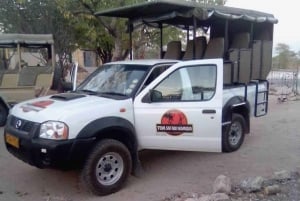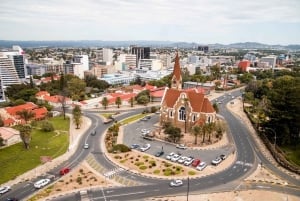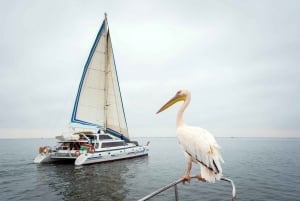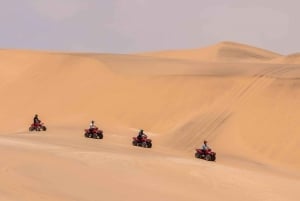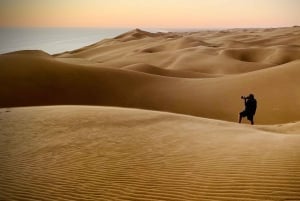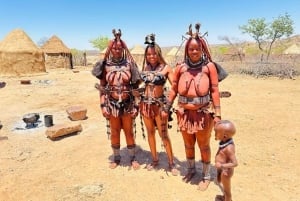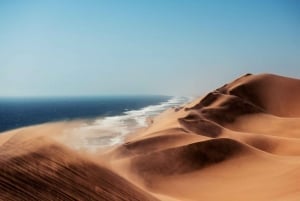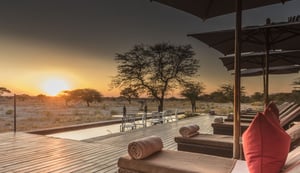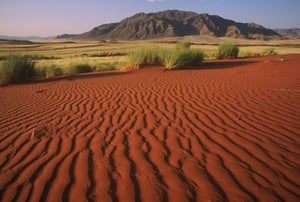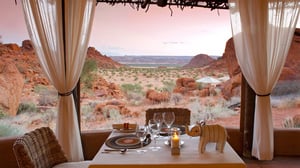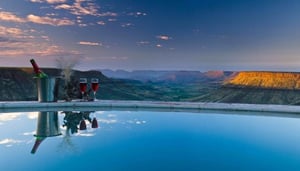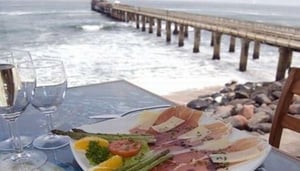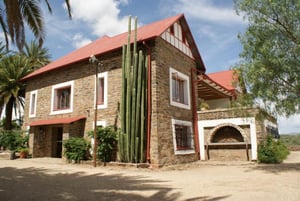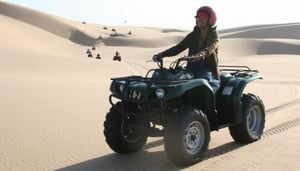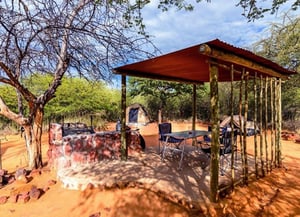Regional Info
Namibia has it all and our guide has been designed to help you research and explore with the guidance of Local Experts!
In this comprehensive regional guide, we'll delve into the diverse regions of Namibia, uncovering the hidden gems and must-see attractions that make this country a true African treasure.
The Namib Desert Region: Stretching along the Atlantic coastline, the Namib Desert is one of the oldest and most awe-inspiring deserts on Earth.
Sossusvlei and Deadvlei: Iconic salt and clay pans surrounded by towering red dunes, offering unparalleled opportunities for photography and exploration.
Skeleton Coast: A hauntingly beautiful stretch of coastline, known for its shipwrecks, seal colonies, and vast desert landscapes.
Namib-Naukluft National Park: Home to diverse desert wildlife, including oryx, springbok, and elusive desert-adapted elephants.
The Kunene Region: Located in the northwest of Namibia, the Kunene Region is characterized by its rugged mountains, winding rivers, and remote wilderness areas.
Epupa Falls: A series of cascading waterfalls on the Kunene River, surrounded by towering baobab trees and dramatic landscapes.
Himba Villages: Traditional settlements inhabited by the Himba people, known for their distinctive red ochre hairstyles and unique cultural practices.
Kaokoland: A remote and untouched wilderness area, home to desert-adapted wildlife such as desert lions, giraffes, and elephants.
The Zambezi Region: Formerly known as the Caprivi Strip, the Zambezi Region is a lush and fertile area characterized by its meandering rivers, dense woodlands, and abundant wildlife.
Chobe National Park: A haven for wildlife enthusiasts, boasting large herds of elephants, buffalo, and prolific birdlife along the Chobe River.
Zambezi River: Offering excellent opportunities for fishing, birdwatching, and boat safaris, with a chance to spot hippos, crocodiles, and aquatic bird species.
Mahango Game Reserve: A lesser-known gem, home to rare antelope species such as sitatunga and red lechwe, as well as predators like leopards and wild dogs.
The Damaraland Region: A rugged and arid landscape dotted with ancient rock formations, towering mountains, and desert-adapted wildlife.
Twyfelfontein: A UNESCO World Heritage Site renowned for its ancient rock engravings, depicting scenes of hunting, dancing, and ritual ceremonies.
Brandberg Mountain: Namibia's highest peak, home to the famous "White Lady" rock painting and a sanctuary for desert-adapted flora and fauna.
Desert-adapted Wildlife: Encounter unique species such as desert-adapted elephants, black rhinos, and mountain zebras, perfectly adapted to the harsh desert environment.
The Etosha Region: Home to Namibia's premier wildlife destination, Etosha National Park, the Etosha Region offers unparalleled opportunities for wildlife viewing and photography. Etosha National Park: A vast salt pan surrounded by grasslands and mopane woodlands, teeming with an abundance of wildlife including lions, elephants, and rhinos. Ongava Game Reserve: A private reserve adjacent to Etosha, offering exclusive safari experiences and the chance to spot rare species such as black-faced impala and Hartmann's mountain zebra.
Ovahimba Cultural Village: Immerse yourself in the traditions and customs of the Ovahimba people, learning about their traditional medicine, music, and storytelling.
Conclusion: Namibia's diverse regions offer a wealth of natural wonders, cultural treasures, and unforgettable experiences for travelers seeking adventure off the beaten path. Whether exploring the towering dunes of the Namib Desert, encountering desert-adapted wildlife in Damaraland, or immersing oneself in the vibrant culture of the Himba people, Namibia promises an unforgettable journey through some of Africa's most spectacular landscapes.


